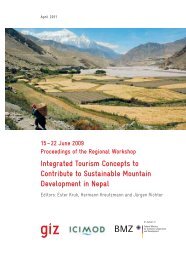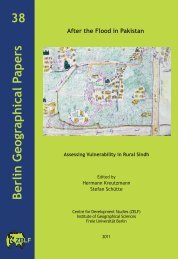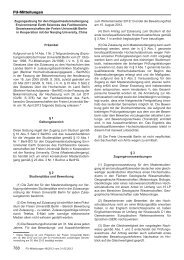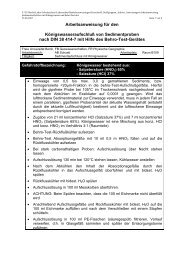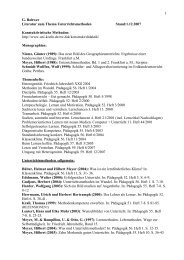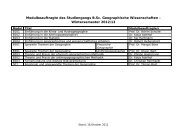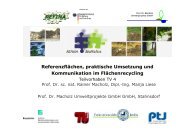Pastoralism and Rangeland Management on the Tibetan Plateau in ...
Pastoralism and Rangeland Management on the Tibetan Plateau in ...
Pastoralism and Rangeland Management on the Tibetan Plateau in ...
Create successful ePaper yourself
Turn your PDF publications into a flip-book with our unique Google optimized e-Paper software.
distributi<strong>on</strong> of plants, by scarify<strong>in</strong>g seeds <strong>in</strong> <strong>the</strong>ir guts, transport<strong>in</strong>g <strong>the</strong>m over<br />
great distances <str<strong>on</strong>g>and</str<strong>on</strong>g> fertiliz<strong>in</strong>g <strong>the</strong> ground where <strong>the</strong>y are deposited. As a result,<br />
pastoralism has created envir<strong>on</strong>ments that are favourable to specific plant <str<strong>on</strong>g>and</str<strong>on</strong>g><br />
animal species to produce quality products.<br />
Pastoral niche producti<strong>on</strong> covers both plants <str<strong>on</strong>g>and</str<strong>on</strong>g> animal-based products <strong>in</strong>clud<strong>in</strong>g<br />
meat <str<strong>on</strong>g>and</str<strong>on</strong>g> meat products, dairy products, raw woollen products, <str<strong>on</strong>g>and</str<strong>on</strong>g><br />
harvest<strong>in</strong>g <str<strong>on</strong>g>and</str<strong>on</strong>g> primary process<strong>in</strong>g of medic<strong>in</strong>al herbs. Medic<strong>in</strong>al plants not<br />
<strong>on</strong>ly play a pivotal role <strong>in</strong> provid<strong>in</strong>g primary healthcare for pastoralists, <strong>in</strong>creas<strong>in</strong>gly<br />
<strong>the</strong>se niche products are be<strong>in</strong>g ga<strong>the</strong>red, processed <str<strong>on</strong>g>and</str<strong>on</strong>g> sold <strong>in</strong> nati<strong>on</strong>al<br />
<str<strong>on</strong>g>and</str<strong>on</strong>g> <strong>in</strong>ternati<strong>on</strong>al markets. Prom<strong>in</strong>ent examples of high value medic<strong>in</strong>al plants<br />
that are comm<strong>on</strong>ly used <strong>in</strong> <strong>the</strong> <strong>Tibetan</strong> system of traditi<strong>on</strong>al medic<strong>in</strong>e (Soya<br />
Rigpa) are: Ophiocordyceps s<strong>in</strong>ensis, Neopicrorhiza scrophulariiflora, Picrorhiza<br />
kurrooa, Nardostachys gr<str<strong>on</strong>g>and</str<strong>on</strong>g>iflora, Dactylorhiza hatagirea, Podophyllum hex<str<strong>on</strong>g>and</str<strong>on</strong>g>rum,<br />
Ac<strong>on</strong>itum spp. etc. Experience ga<strong>the</strong>red to date suggests that technical,<br />
socio-ec<strong>on</strong>omical, <strong>in</strong>stituti<strong>on</strong>al <str<strong>on</strong>g>and</str<strong>on</strong>g> policy <strong>in</strong>puts are required to develop niche<br />
producti<strong>on</strong> <strong>in</strong> pastoral systems. This paper analyses <str<strong>on</strong>g>and</str<strong>on</strong>g> recommends <strong>the</strong><br />
follow<strong>in</strong>g acti<strong>on</strong>s <strong>in</strong> future: a) rais<strong>in</strong>g awareness through different formal <str<strong>on</strong>g>and</str<strong>on</strong>g><br />
<strong>in</strong>formal educati<strong>on</strong> means; b) skill development <strong>in</strong> susta<strong>in</strong>able harvest<strong>in</strong>g as<br />
well as graz<strong>in</strong>g management; c) producti<strong>on</strong> of organic <str<strong>on</strong>g>and</str<strong>on</strong>g> susta<strong>in</strong>ably managed<br />
niche products; d) <strong>in</strong>tegrati<strong>on</strong> of agricultural <str<strong>on</strong>g>and</str<strong>on</strong>g> pastoral livelihoods with offfarm<br />
activities through value-cha<strong>in</strong> development of major niche products that<br />
have high value captur<strong>in</strong>g potential. e) improvement of degraded pasture l<str<strong>on</strong>g>and</str<strong>on</strong>g>s<br />
to enhance productivity of niche products <str<strong>on</strong>g>and</str<strong>on</strong>g> services; f) c<strong>on</strong>servati<strong>on</strong> through<br />
susta<strong>in</strong>able-use oriented policy <str<strong>on</strong>g>and</str<strong>on</strong>g> legal reforms to implement <strong>in</strong>tegrated strategies<br />
of l<strong>in</strong>k<strong>in</strong>g c<strong>on</strong>servati<strong>on</strong> of wild fauna <str<strong>on</strong>g>and</str<strong>on</strong>g> flora with susta<strong>in</strong>able pastoral<br />
producti<strong>on</strong> systems; <str<strong>on</strong>g>and</str<strong>on</strong>g> g) expansi<strong>on</strong> of ecologically sensitive low-<strong>in</strong>put highreturn<br />
tourism, us<strong>in</strong>g pastoralists to provide services, particularly through <strong>the</strong>ir<br />
<strong>in</strong>digenous knowledge <str<strong>on</strong>g>and</str<strong>on</strong>g> improved local producti<strong>on</strong> practices.<br />
1 Background<br />
Human well-be<strong>in</strong>g is str<strong>on</strong>gly dependent up<strong>on</strong> ecosystem services provided<br />
freely by nature <str<strong>on</strong>g>and</str<strong>on</strong>g> its vast biodiversity wealth. Many of <strong>the</strong>se goods <str<strong>on</strong>g>and</str<strong>on</strong>g><br />
services are public property, <str<strong>on</strong>g>and</str<strong>on</strong>g> as such <strong>the</strong>y do not have a market price as <strong>the</strong><br />
market system ma<strong>in</strong>ly rewards resource owners <str<strong>on</strong>g>and</str<strong>on</strong>g> suppliers for <strong>the</strong> benefits of<br />
ecosystem c<strong>on</strong>versi<strong>on</strong> <str<strong>on</strong>g>and</str<strong>on</strong>g> use. As a result, ecosystem degradati<strong>on</strong> <str<strong>on</strong>g>and</str<strong>on</strong>g> biodiversity<br />
loss is often not detected by our current market system. Currently, a variety<br />
of pressures result<strong>in</strong>g from populati<strong>on</strong> growth, globalizati<strong>on</strong> of ec<strong>on</strong>omy,<br />
chang<strong>in</strong>g diets, urbanizati<strong>on</strong>, acculturati<strong>on</strong> <str<strong>on</strong>g>and</str<strong>on</strong>g> climate change is caus<strong>in</strong>g additi<strong>on</strong>al<br />
stra<strong>in</strong> <strong>on</strong> ecosystem c<strong>on</strong>servati<strong>on</strong> <str<strong>on</strong>g>and</str<strong>on</strong>g> management of natural resources<br />
143<br />
> > > 4. Niche Producti<strong>on</strong> as an Additi<strong>on</strong>al Asset for <str<strong>on</strong>g>Pastoralism</str<strong>on</strong>g> <str<strong>on</strong>g>and</str<strong>on</strong>g> Rangel<str<strong>on</strong>g>and</str<strong>on</strong>g> <str<strong>on</strong>g>Management</str<strong>on</strong>g>



